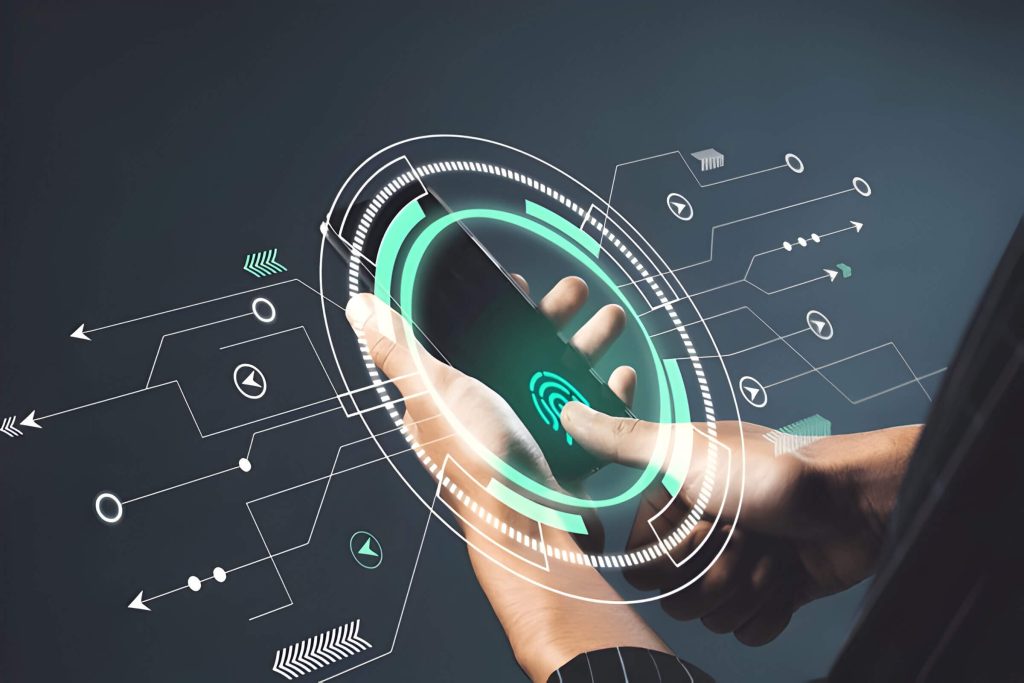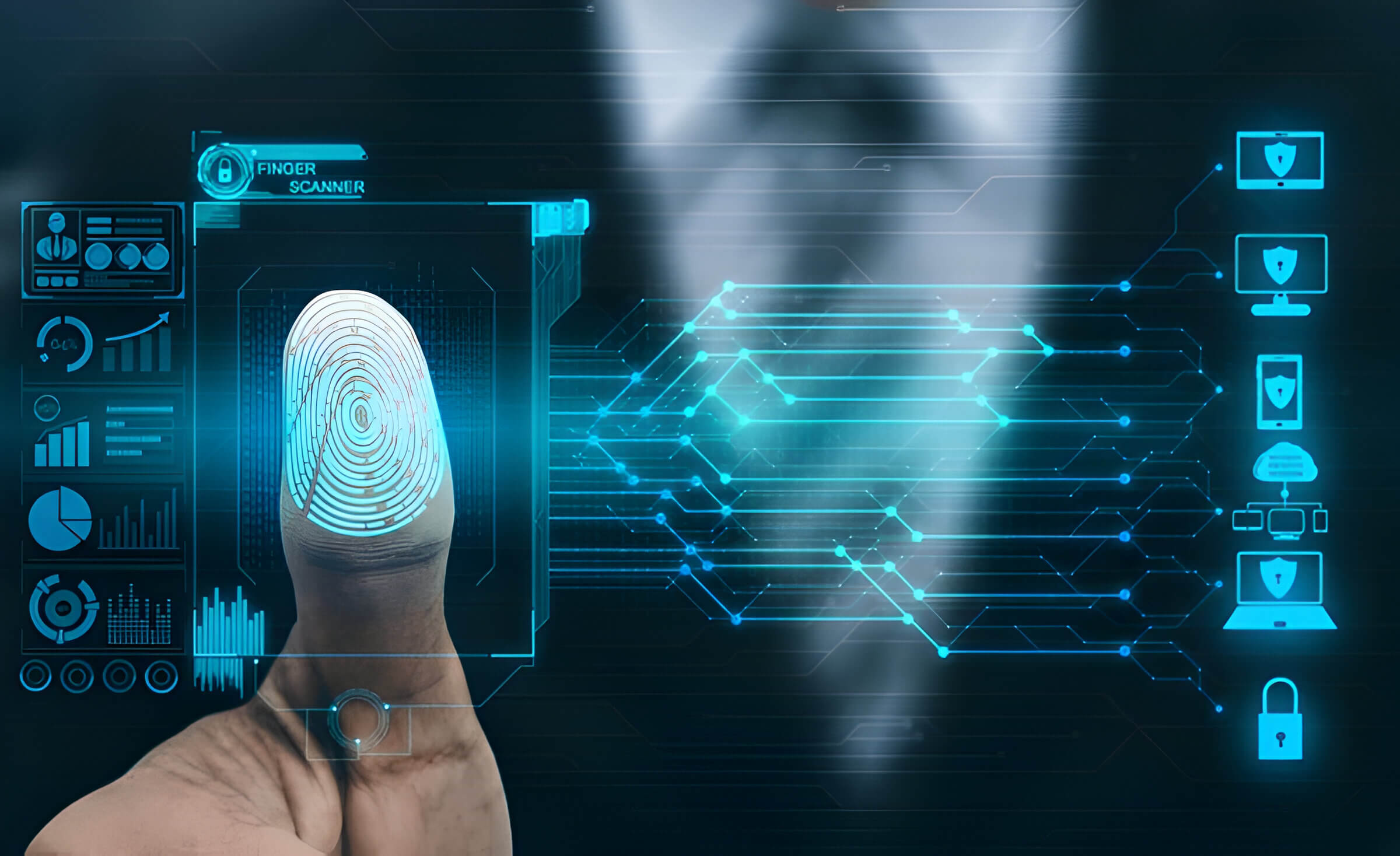Biometrics, the science of personal identification using unique physical and behavioral traits, is revolutionizing security and authentication. It offers highly accurate identity verification through methods like fingerprint and facial recognition. While expanding across industries and promising improved security and convenience, biometrics also raises privacy concerns. This overview examines its applications, benefits, challenges, and future prospects.
Understanding Biometrics
Biometric technology is a sophisticated method of identifying individuals based on their unique physical characteristics or behavioral traits. This cutting-edge field utilizes advanced algorithms to analyze and authenticate biometric data, which serves as a reliable means of personal identification.
Physical characteristics commonly used in biometrics include fingerprints, facial features, iris patterns, and DNA. These attributes are considered unique identifiers, as they differ from person to person and remain relatively constant over time. On the other hand, behavioral traits such as voice patterns, gait analysis, and keystroke dynamics offer another dimension of identification.
The process of biometric authentication typically involves three main steps: enrollment, storage, and matching. During enrollment, an individual’s biometric data is captured and converted into a digital template. This template is then securely stored in a database for future reference. When authentication is required, the system compares the presented biometric data with the stored template to determine a match.
Biometric technology offers numerous advantages over traditional identification methods, including enhanced security, convenience, and accuracy. As this field continues to evolve, it finds applications in various sectors such as law enforcement, border control, healthcare, and consumer electronics, revolutionizing the way we approach identity verification and access control.
Types of Biometric Systems

Biometric systems have revolutionized security and identification processes across various industries. These sophisticated technologies utilize unique physical or behavioral characteristics to verify an individual’s identity. Let’s explore some of the most common types of biometric systems:
- Fingerprint Scanning: This widely-used method captures and analyzes the distinct patterns of ridges and valleys on a person’s fingertips.
- Facial Recognition: Advanced algorithms map facial features and contours to create a unique digital signature for identification purposes.
- Iris Scanning: By capturing high-resolution images of the eye’s iris, this system can identify individuals based on the intricate patterns within the colored part of the eye.
- Voice Recognition: This technology analyzes vocal characteristics such as pitch, tone, and speech patterns to verify a person’s identity.
- Palm Vein Patterns: Using near-infrared light, this method captures the unique vein patterns beneath the skin of an individual’s palm.
- DNA Analysis: Although less common in everyday applications, DNA analysis provides highly accurate identification based on an individual’s genetic makeup.
Each of these biometric systems offers varying levels of accuracy, speed, and applicability, making them suitable for different security needs and environments. As technology continues to advance, we can expect even more sophisticated and reliable biometric identification methods to emerge.
Applications of Biometrics in Various Industries
Biometric technology has revolutionized security and identification processes across numerous industries. In law enforcement, facial recognition and fingerprint scanning have become invaluable tools for identifying suspects and solving crimes. Healthcare providers utilize biometrics for patient identification, ensuring accurate medical records and preventing fraud. The banking sector has embraced biometric authentication for secure transactions and account access, reducing the risk of identity theft.
Border control agencies worldwide have implemented biometric systems to enhance national security and streamline immigration processes. These systems can quickly verify travelers’ identities against international databases, improving efficiency and accuracy at border checkpoints.
In the consumer electronics realm, smartphone manufacturers have integrated various biometric features, such as fingerprint sensors and facial recognition, to provide convenient and secure device authentication. This technology not only protects personal data but also enables seamless mobile payment solutions.
As biometric applications continue to evolve, we can expect to see even more innovative uses across industries, further enhancing security, efficiency, and user experience in our increasingly digital world.
The Advantages of Biometric Technology
Biometric technology offers numerous advantages across various sectors, revolutionizing the way we approach security and identification. One of the primary benefits is enhanced security, as biometric data is unique to each individual and extremely difficult to replicate or forge. This level of security significantly reduces the risk of unauthorized access and identity theft.
Convenience is another key advantage of biometric systems. Users no longer need to remember complex passwords or carry multiple identification cards. Instead, they can simply use their fingerprints, facial features, or other biological characteristics for quick and easy authentication.
The accuracy of biometric technology is unparalleled. Unlike traditional methods, biometric systems provide a high level of precision in identifying individuals, minimizing errors and false positives. This accuracy is particularly crucial in high-security environments and sensitive applications.
Fraud prevention is greatly improved with biometric technology. As biometric data is non-transferable, it becomes nearly impossible for individuals to impersonate others or use stolen credentials. This feature is especially valuable in financial transactions and government services.
Time efficiency is a significant benefit of biometric systems. The authentication process is typically much faster than traditional methods, reducing wait times and improving overall productivity in various settings, from workplace access control to airport security checkpoints.
In conclusion, the non-transferable nature of biometric data, combined with its accuracy and convenience, makes it an increasingly popular choice for security and identification purposes across multiple industries.
Potential Concerns and Limitations of Biometrics
While biometric technology offers numerous advantages, it’s crucial to consider its potential drawbacks and limitations. Privacy issues are at the forefront of concerns, as biometric data is highly personal and unique to each individual. The storage and protection of this sensitive information raise questions about data security and potential misuse.
Data breaches involving biometric information can have severe consequences, as unlike passwords, biometric traits cannot be easily changed or reset. This makes the secure storage of biometric data a critical challenge for organizations implementing these systems.
False positives and false negatives are another limitation of biometric systems. False positives occur when the system incorrectly identifies an unauthorized individual as authorized, while false negatives happen when it fails to recognize an authorized user. These errors can lead to security breaches or inconvenience for legitimate users.
Spoofing attacks, where malicious actors attempt to deceive biometric systems using fake fingerprints, facial masks, or voice recordings, pose a significant threat to the reliability of these technologies. As biometric systems become more sophisticated, so do the methods used to circumvent them.
The long-term storage of biometric data also raises concerns about potential future misuse or repurposing of this information. As technology evolves, there are worries that stored biometric data could be used for purposes beyond its original intent, potentially infringing on individual privacy and civil liberties.
The Future of Biometrics
The field of biometrics is rapidly evolving, with new technologies and trends emerging that promise to revolutionize security and authentication processes. One of the most significant developments is the rise of multimodal biometrics, which combines multiple biometric identifiers to enhance accuracy and reliability. This approach significantly reduces the risk of false positives and negatives, making it increasingly attractive for high-security applications.
Behavioral biometrics is another area gaining traction, focusing on unique patterns in human activities such as typing rhythm, gait, or even mouse movements. This non-intrusive method of authentication adds an extra layer of security without inconveniencing users.
The integration of artificial intelligence (AI) with biometric systems is dramatically improving their performance and adaptability. AI algorithms can learn and adjust to subtle changes in biometric data over time, ensuring consistent accuracy and reducing the need for frequent system updates.
Continuous authentication is becoming more prevalent, especially in mobile and IoT devices. This approach constantly verifies a user’s identity throughout a session, rather than just at the point of login, providing enhanced security for sensitive applications.
Wearable biometrics are also on the rise, with devices like smartwatches and fitness trackers capable of collecting and analyzing biometric data. These devices offer convenient, always-on authentication methods that could potentially replace traditional passwords and PINs in many scenarios.
As these technologies continue to advance, we can expect biometrics to play an increasingly central role in our daily lives, from securing our digital identities to personalizing our interactions with smart environments.
Implementing Biometric Systems
Implementing biometric systems requires careful planning and consideration of various factors to ensure effectiveness, security, and compliance. Data protection should be a top priority, with robust encryption and storage protocols in place to safeguard sensitive biometric information. Obtaining explicit user consent is crucial, as individuals must be fully informed about how their biometric data will be collected, used, and stored.
System integration is another key aspect, as biometric technology should seamlessly integrate with existing security infrastructure and workflows. Scalability is essential for organizations expecting growth or increased usage over time, ensuring the system can handle expanding user bases and data volumes.
Legal compliance is paramount, with implementers needing to stay abreast of relevant regulations such as GDPR, CCPA, or industry-specific guidelines. Ethical considerations must also be addressed, including privacy concerns, potential biases in the technology, and the impact on user trust.
By carefully addressing these factors, organizations can successfully implement biometric systems that enhance security while respecting user rights and maintaining legal and ethical standards.






